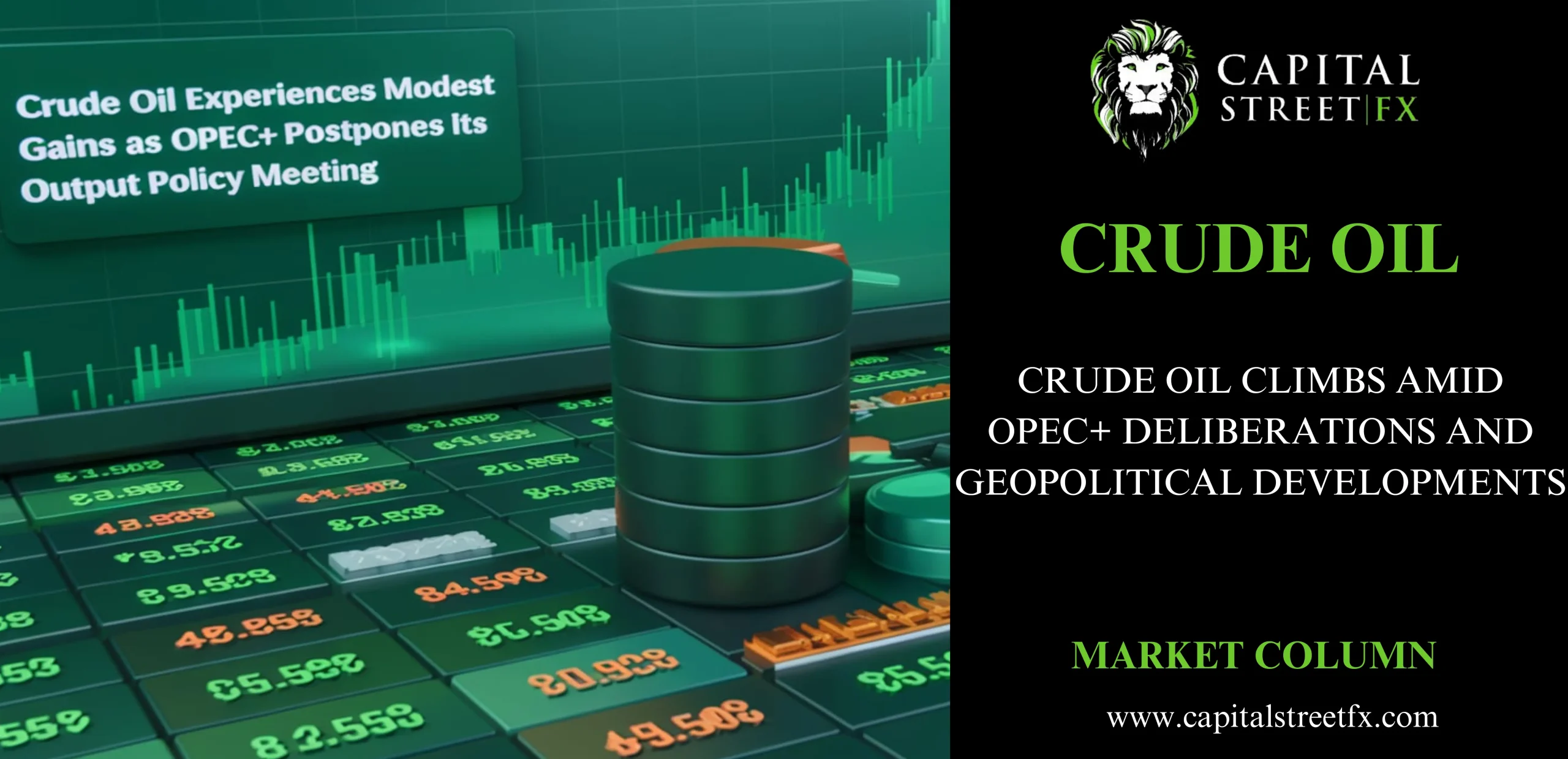Crude Oil Climbs Amid OPEC+ Deliberations and Geopolitical Developments

Highlights:
- US President Joe Biden lauds a pivotal Middle East ceasefire, deeming the 60-day agreement a potential cornerstone for lasting peace.
- OPEC+ defers its Output Policy Meeting to December 5, sparking further speculation about strategic production adjustments.
- US Dollar Index rebounds, even as American markets pause for Thanksgiving.
Crude oil prices exhibited a measured ascent during Thursday’s European trading session. However, underlying bearish sentiment lingered, shaped by global market dynamics and geopolitical intricacies. President Joe Biden’s optimistic framing of the recent Middle East ceasefire—hailed as a durable resolution to Lebanon’s prolonged hostilities—added a veneer of stability to a volatile region, as reported by Bloomberg.
Simultaneously, OPEC+ has opted to reschedule its highly anticipated Output Policy Meeting from Sunday to December 5. The consortium now faces the pressing task of navigating a labyrinth of challenges, including waning global demand and an unrelenting influx of non-OPEC oil, which collectively jeopardize the market’s equilibrium.
Currency and Fiscal Dynamics Intensify Market Focus
The US Dollar Index (DXY), a benchmark for the greenback’s relative strength against a basket of international currencies, has demonstrated resilience, bouncing off a key technical support level. This recovery unfolds amid subdued trading in the US, owing to the Thanksgiving holiday, while European markets assume the spotlight.
Notably, France confronts fiscal headwinds, as Prime Minister Michel Barnier underscores potential volatility should the French Parliament falter in passing a pivotal budget plan. Such a failure could precipitate significant instability within France’s financial systems, amplifying concerns across the broader Eurozone.
Oil Markets Await Decisive Action
Despite modest gains, crude oil prices remain ensnared by selling pressure, as investor confidence wanes in the face of OPEC+’s perceived inertia. The alliance’s delay in addressing structural supply-demand imbalances exacerbates market skepticism, especially as China’s economic deceleration and weakening global oil appetite compound the strain.
Additionally, anticipation mounts over potential shifts in US production dynamics under President-elect Donald Trump’s administration, further complicating OPEC+’s efforts to orchestrate a market recovery. In this precarious landscape, the oil-producing coalition must deliver a robust and convincing strategy to restore stability and investor confidence.
Conclusion
The interplay of geopolitical breakthroughs, currency oscillations, and OPEC+’s strategic hesitations sets the stage for an uncertain yet pivotal chapter in the global oil narrative. Traders, policymakers, and analysts alike will watch December’s developments closely, as the outcomes hold far-reaching implications for energy markets and beyond.

